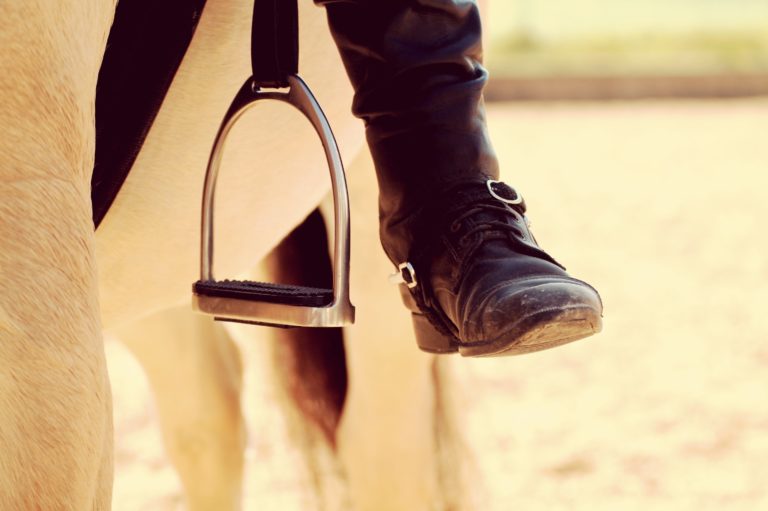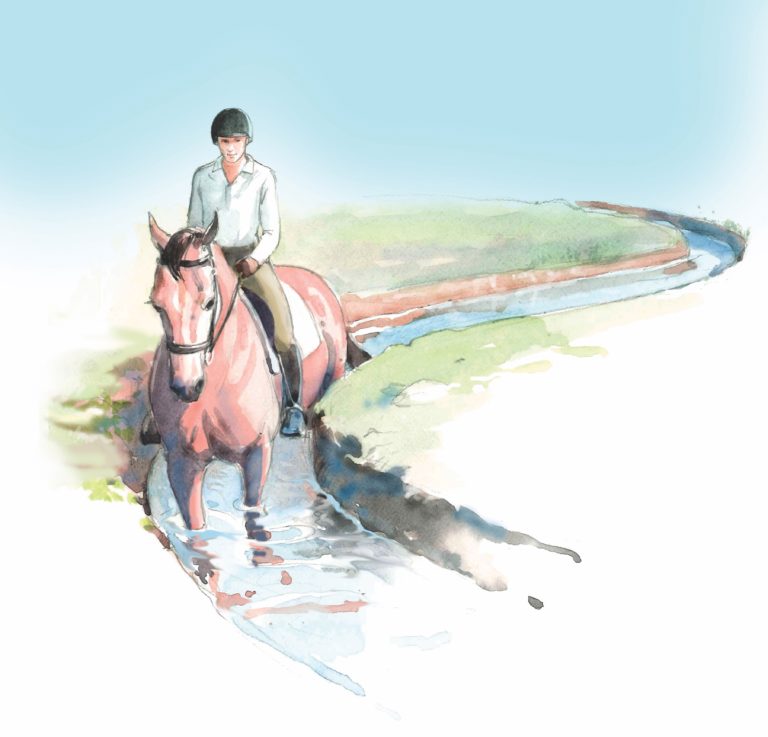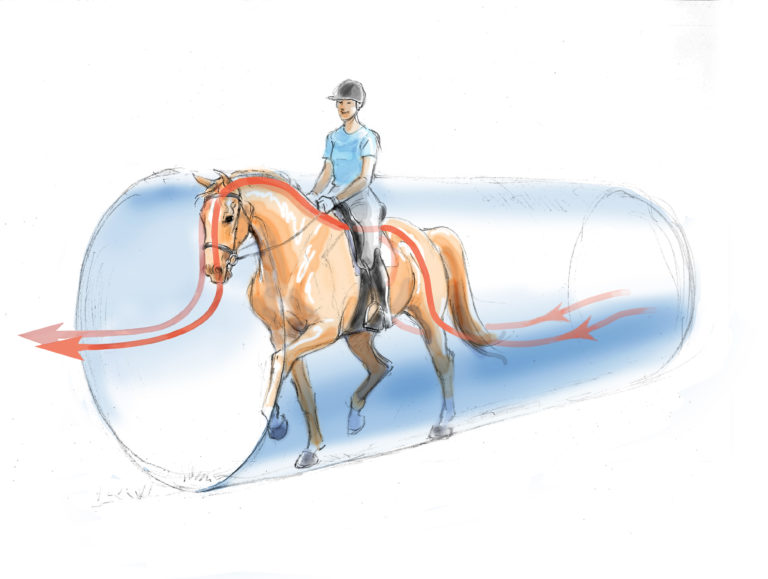Q: I’m an adult rider who has just started with dressage. I’ve read a lot about “pushing the horse onto the bit,” an expression I don’t like as it suggests a rough and unrefined action—jamming him together. When I see good riders, it never looks like they’re using a lot of strength. What is their secret?
A: There is no secret! The fundamental requirement in a dressage horse is that he is forward. In the Collective Marks section of a dressage test sheet, it says that the horse must demonstrate a “desire to go forward.” This suggests that forward is really nothing more or nothing less than a state of mind. I like to suggest to my students that they conjure up the image of a dog straining gently at the leash to better help them understand this concept.
Good riders and trainers will teach their horses to “look for the bit,” follow their hands and stretch into the reins—a fundamental quality in a dressage horse. In this way the horse learns to trust his rider’s hand, stretch over his topline and go forward into the bit. This is what “putting a horse onto the bit” is all about.
I am reminded of a wonderful definition in the British Horse Society’s manual. It went roughly as follows: A horse is said to be on the bit when his hocks are correctly placed, he is flexed at the poll, relaxed in his lower jaw and ceases to offer resistance to his rider’s hand.
It goes without saying that the energy created by having the horse go truly forward underneath you, has to be contained—I like to call it harnessed—which means that the rider’s hand will have to receive this energy, regulate it and control the pace. In no way should this be construed as restricting the horse. The rider’s hand will allow a consistent flow, rather like keeping the door slightly ajar and not closing it altogether. The horse’s balance and the level of collection or extension required at the time dictate the amount of energy that is allowed to go through this opening.
It is in the very nature of things that when the horse is put correctly to the aids by being ridden forward from behind, he will relax in his jaw, flex at the poll and soften in his neck, so the contact will become light and responsive. (Coercion and “jamming him together” are not a prerequisite!) This encourages the horse to relax his back and bring it up, so he can tip his pelvis and step farther under his body with his hind legs. This, in turn, enables him to improve his balance under the weight of his rider, by carrying more of their combined weight on his hindquarters and lighten his forehand, ultimately achieving collection.
The whole process involves development of the requisite muscle groups and takes a long time—usually a year for each level. There is no shortcut. Thus, in a very real sense, the good rider is not shortening his horse’s neck or restricting him in any way, but is instead actually showing him how to use his neck properly and to his advantage. All this requires is that the horse be forward thinking, and he must be shown how to work on his own and go from a very light aid. It is no accident that good, upper-level horses exude an air of self-confidence and appear to be relaxed and joyful in their work. This is why the better riders don’t seem to be doing very much!
Unfortunately, as you seem to realize, not all riders are this accomplished and many do resort to the use of excessive strength or other means (such as draw reins, the use of which I abhor since they do indeed work on the wrong end of the horse) to put their horses into a “frame.” I hate this word, as it conveys a rigid or fixed outline. The more the horse is restricted in front, the more he is being “shut down” by his rider’s hands and not allowed to go forward. This will inevitably result in the situation to which you refer, but rest assured that it is not correct and, generally speaking, is becoming less and less prevalent as we are becoming better educated.
Jeremy Beale is a U.S. Dressage Federation (USDF) gold medalist and former international and Olympic event rider for Great Britain. A popular clinician through the FEI levels, he and his wife, Jan, operate Pen-Y-Bryn Equestrian Center in Chester Springs, Pa. He also designs equestrian products.











